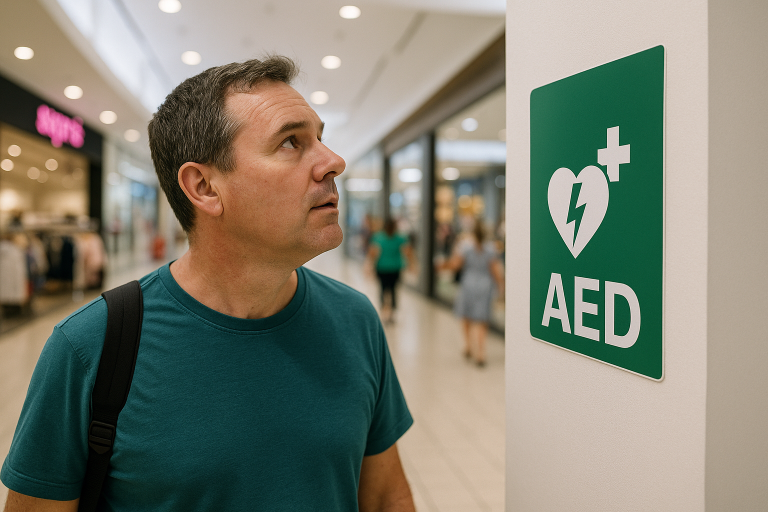Training and Assessment Delivered on Behalf of Allens Training Pty Ltd RTO 90909
Building a Meaningful Safety Culture
As a fire and first aid trainer based in Toowoomba, I work with people and organisations across all industries. From talking to my students and observing the small interactions you can learn a lot about a workplace very quickly.
I see a few common factors that reflect the strength of the Safety Mangement System. While the technical skills, such as risk management are essential, if the attitude isn’t right, safety isn’t going anywhere. This is why a string Safety Culture is important.
For me, three fundamental elements of a strong safety culture are:
- Trust
- Engagement
- Accountability
But what exactly is a safety culture? At its core, it’s how the organisation feels, thinks and acts about safety. This is true on an individual level, a team level and an organisational level.
For example, think about how you react if a safety meeting is called. We can have a wide range of thoughts, including:
- Not again
- Yay, some time off work
- Finally, we’re doing something about…
- More talk, with no action.
All of these reactions and more a common in workplaces and often we’ll have more than one. On their own, an initial reaction may not mean we have a poor culture, but if the pattern is one of distrust, disengagement or the feeling that nothing changes, then maybe our culture needs work
However, building such a culture isn’t a simple task. It requires consistency and a focus on key attributes that form the foundation of a meaningful, integrated safety culture. In this post, we’ll explore three critical elements that are essential for fostering a thriving safety culture: Trust, Engagement, and Accountability.
Trust: The Foundation of Safety Culture
Trust is where it all begins. It’s the assurance that all parties within an organization – from the CEO to the newest hire – are working towards the same goal: making the workplace as safe as it can possibly be. Without trust, you have a failing business. Not just in safety, but overall.
Before any improvement can happen, all parties need to trust each other. The workers need to trust the boss is looking out for them. The PCBU needs to trust their workers are genuine and not just looking for excuses. And Workers need to trust each other that they won’t do anything dumb.
When trust is present, employees feel confident in reporting safety concerns without fear of reprisal. They believe that management genuinely cares about their well-being and will take appropriate action to address hazards. Similarly, management trusts that employees will follow safety protocols and make responsible decisions even when no one is watching.
What are some steps we can take to build trust?
Try these on for size:
- Shared Goals: Clearly communicate that safety is a top priority for everyone in the organization. This message should come from the highest levels of leadership and be consistently reinforced at all levels.
- Open Communication: Create channels for two-way communication about safety issues. This could include regular safety meetings, anonymous reporting systems, or an open-door policy with safety managers. It can also mean actively seeking one on one opportunities to speak with workers directly.
- Transparency: Be open about safety policies, incident statistics, and improvement initiatives. When incidents do occur, share the findings of investigations and the steps taken to prevent future occurrences.
- Consistency: Ensure that safety policies are applied fairly and consistently across all departments and levels of the organization. Favouritism or perceived double standards can quickly erode trust.
- Follow-through: When safety concerns are raised, act on them promptly. Nothing damages trust more than ignoring or dismissing valid safety issues.
Trust-building practices might include involving employees in safety policy development, celebrating safety milestones as a team, or implementing a “no blame” culture for reporting safety concerns. By fostering an environment of trust, organizations lay the groundwork for a safety culture where everyone feels responsible for and empowered to contribute to workplace safety.
Building trust takes time and comes from smaller interactions daily. While management commitment is the essential starting point, people don’t trust just because the boss says so. However, when there is open and honest communication and clear policies that everyone knows reflect real practices, trust can start to grow. This then leads to…

Engagement: Active Participation at All Levels
While trust forms the foundation, engagement is what brings a safety culture to life.
Engagement means that everyone in the organization, from the owner and management to front-line workers, actively participates in safety initiatives and takes personal responsibility for maintaining a safe work environment. It also means that everyone feels their input is valuable and valued.
Engagement in safety culture manifests in several ways:
- Leadership Involvement: When senior people visibly prioritize safety, it sends a powerful message throughout the organization. This could involve regularly participating in safety walks, attending safety meetings, or personally reviewing safety performance metrics.
- Employee Participation: Encourage workers to take an active role in safety management. This might include participating in safety committees, contributing to risk assessments, or suggesting safety improvements.
- Continuous Learning: Implement regular safety training programs that go beyond basic compliance. These should be interactive, relevant to specific job roles, and updated regularly to reflect new safety knowledge and best practices.
- Recognition and Rewards: Acknowledge and celebrate individuals or teams that demonstrate exceptional commitment to safety. This could be through formal award programs, public recognition, or even linking safety performance to career advancement opportunities.
- Empowerment: Give employees the authority to stop work if they believe there’s a safety risk. This level of empowerment demonstrates trust and reinforces the message that safety truly comes first.
- Near-Miss Reporting: Encourage the reporting of near-misses and potential hazards. These reports are valuable learning opportunities and can prevent future incidents.
Engagement can be fostered through initiatives like safety suggestion boxes, regular safety-focused town halls, or cross-functional safety teams. The key is to create an environment where safety is not seen as a separate task, but as an integral part of everyone’s job.
An engaged workplace also has higher expectations, that lead to…
Accountability: Ensuring Follow-Through
Knowing that there is meaningful accountability for our part in the safety process is reflected in the actions of the PCBU and workers. When there are clearly defined roles and a clear understanding of how our actions affect those around us, we work more safely.
Key aspects of accountability in safety culture include:
- Clear Roles and Responsibilities: Everyone should understand their specific responsibilities when it comes to safety. This includes not just safety professionals, but all employees and managers.
- Performance Measures: Establish clear, measurable safety performance indicators. These could include leading indicators like near-miss reports and safety training completion rates, as well as lagging indicators like incident rates.
- Follow-Up on Improvements: When safety improvements are identified, create clear action plans with deadlines and responsible parties. Regularly review progress on these plans.
- Consistent Enforcement: Safety rules and policies must be enforced consistently across the organization. This includes holding managers and supervisors accountable for the safety performance of their teams.
- Learning Culture: When incidents or near-misses occur, focus on learning and improvement rather than blame. Conduct thorough root cause analyses and share the lessons learned across the organization.
- Consultation Follow-Through: Ensure that consultation arrangements with employees or their representatives are not just formalities but lead to real action and improvements.
There are lots of ways that accountability can be demonstrated but I think it comes down to say what you mean and do what you say. This is true for all levels of the workplace.
It doesn’t have to be formal accountability either. Having the trust and engagement for an apprentice to speak up to an old timer reflects that accountability is strong in the workplace. Everyone knows they are all accountable, not just those with leadership responsibilities.

Bringing It All Together – What are we building?
Trust, engagement, and accountability are not isolated concepts – they work together to create a robust safety culture. Trust enables open communication and reporting, which fuels engagement. Engagement leads to active participation in safety initiatives, which requires accountability to ensure follow-through. And when improvements are consistently implemented, it further builds trust in the system.
Creating this cycle takes time and consistent effort, but needs to start somewhere. A strong safety culture not only reduces incidents and injuries but also contributes to higher employee satisfaction, better quality work, and improved organizational performance overall.
To start building or strengthening your organization’s safety culture, consider these steps:
- Assess your current culture honestly. Where are the gaps in trust, engagement, or accountability?
- Communicate the importance of safety culture clearly and consistently from the top down.
- Involve employees at all levels in safety initiatives and decision-making.
- Provide the necessary resources and training to support safety efforts.
- Regularly measure and review your safety culture, celebrating successes and addressing shortcomings.
Remember, a truly effective safety culture is not built overnight. It requires ongoing commitment, continuous improvement, and a willingness to adapt as things change. But with a focus on trust, engagement, and accountability, you can create a workplace where safety is not just a priority, but a core value that’s embraced by everyone. This not only protects our people but also drives the overall business to be better. In the end, a strong safety culture is not just about preventing harm; it’s about creating an environment where everyone can thrive.
How can we help?
We have been helping Toowoomba businesses be safer for over 20 years. We are your partner in safety, with a specialisation in:


